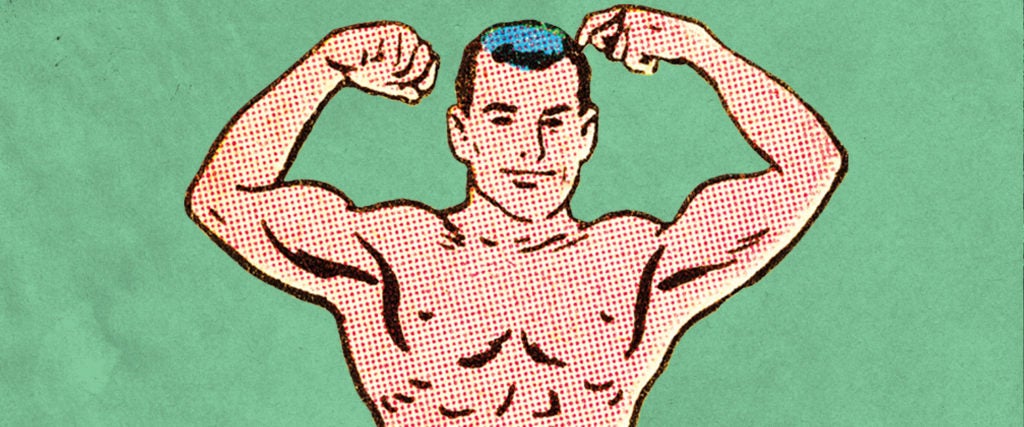Fitness is all about strategy. I know I can’t run, so I don’t waste my time with that. Instead, I know I tend to build muscle in my legs and glutes and have some solid core strength, so I work on perfecting what I’ve already got. But say you’re basically starting from scratch and want to build muscle in the easiest areas you can — maximum results with minimal effort. Which are the easiest muscles to build fast and maintain?
“What I would say is that everyone has some muscle groups that are more genetically prominent and dominant than others,” says Sean Wilson, a certified personal trainer in L.A. “Other than that, I believe you can build and maintain any muscle group equally.”
Even if you’re totally new to exercise, you probably have some idea where your genetic muscular strengths lay, or at least where they don’t. If you have skinny little chicken legs, you might be genetically predisposed to having trouble building leg muscle. Still, you might have better luck building the muscles in your upper legs, like your quadriceps or hamstrings, than you do your calves. In fact, some men have such trouble building muscle in their calves that they resort to calf implants, instead. Meanwhile, some people just naturally have large calves.
• Read next: Your Running Style Has a Big Impact on the Shape of Your Butt
Part of the difficulty with building such a specific muscle as the calves is that it can be a tough region to target with exercise. This is another significant factor in defining which muscles are “easier” to build than others — even if all your muscles will grow at the same rate, there are some muscles that we engage more frequently and can therefore build faster.
For example, compound exercises like squats, pull-ups, burpees or inchworms that target multiple muscles at once might be a better use of your time than just doing bicep curls. While exclusively doing bicep curls might allow you to build your biceps more quickly than doing compound exercises would for each of the muscles they address, that doesn’t exactly make for a balanced workout.
Instead, it’s better to go for a full-body approach. As Wilson says, you can ultimately build and maintain all muscle groups equally. It just might require some extra effort, depending on your genetics and workout inclinations. So, it’s really up to you. Go for full-body exercises and figure out your personal strengths from there, or just focus on a specific muscle group and end up looking like SpongeBob in that episode “MuscleBob BuffPants” where he buys those inflatable arms. It’s your body!

